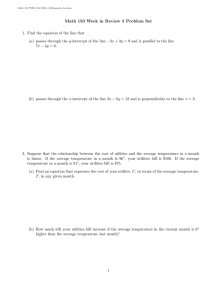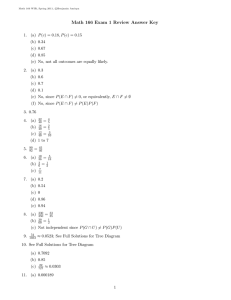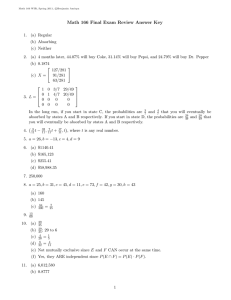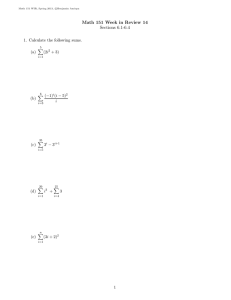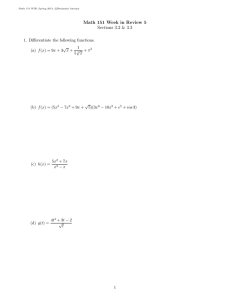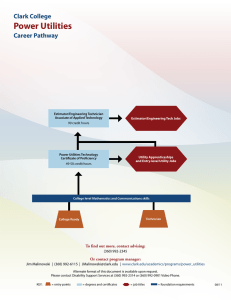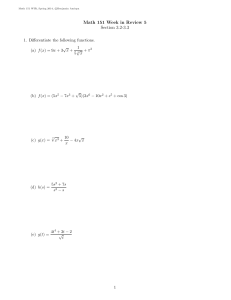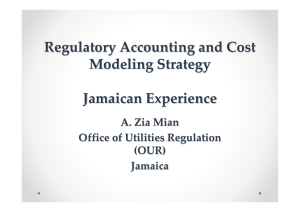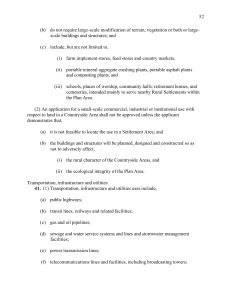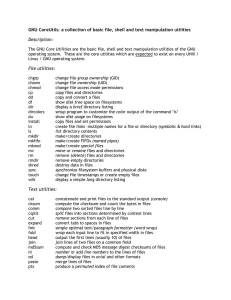Document 10504137
advertisement
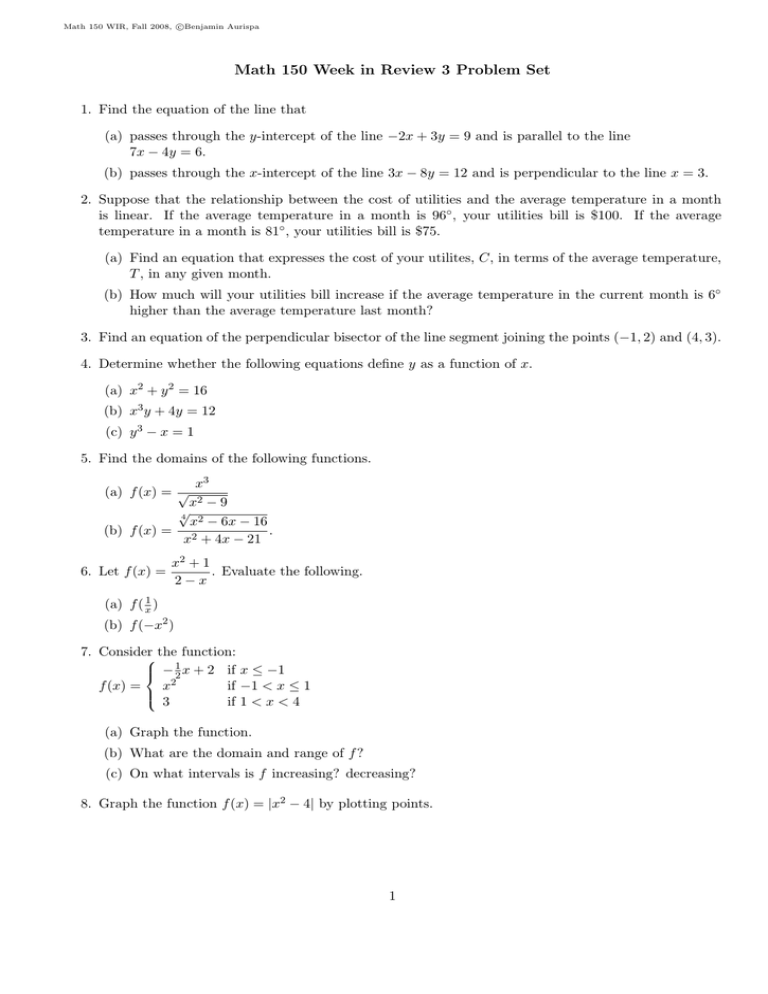
c Math 150 WIR, Fall 2008, Benjamin Aurispa Math 150 Week in Review 3 Problem Set 1. Find the equation of the line that (a) passes through the y-intercept of the line −2x + 3y = 9 and is parallel to the line 7x − 4y = 6. (b) passes through the x-intercept of the line 3x − 8y = 12 and is perpendicular to the line x = 3. 2. Suppose that the relationship between the cost of utilities and the average temperature in a month is linear. If the average temperature in a month is 96◦ , your utilities bill is $100. If the average temperature in a month is 81◦ , your utilities bill is $75. (a) Find an equation that expresses the cost of your utilites, C, in terms of the average temperature, T , in any given month. (b) How much will your utilities bill increase if the average temperature in the current month is 6◦ higher than the average temperature last month? 3. Find an equation of the perpendicular bisector of the line segment joining the points (−1, 2) and (4, 3). 4. Determine whether the following equations define y as a function of x. (a) x2 + y 2 = 16 (b) x3 y + 4y = 12 (c) y 3 − x = 1 5. Find the domains of the following functions. x3 (a) f (x) = √ x2 − 9 √ 4 x2 − 6x − 16 (b) f (x) = 2 . x + 4x − 21 6. Let f (x) = x2 + 1 . Evaluate the following. 2−x (a) f ( x1 ) (b) f (−x2 ) 7. Consider the function: 1 − 2 x + 2 if x ≤ −1 x2 if −1 < x ≤ 1 f (x) = 3 if 1 < x < 4 (a) Graph the function. (b) What are the domain and range of f ? (c) On what intervals is f increasing? decreasing? 8. Graph the function f (x) = |x2 − 4| by plotting points. 1 c Math 150 WIR, Fall 2008, Benjamin Aurispa 9. Graph the function f (x) = x4 − 5x3 − 3x2 + 17x − 10 using a graphing calculator. (a) What is the range of this function? (Round decimals to 4 places.) (b) On what intervals is f increasing? decreasing? (Round decimals to 4 places.) 10. Find the average rate of change for the following functions on the given interval. √ (a) f (x) = x + 8 from x = −4 to x = 1 (b) f (x) = x2 + 2x − 4 from x = 2 to x = 2 + h (c) f (x) = 5 x−4 from x = a to x = a + h 11. Suppose an object is launched into motion. After 10 seconds, the object has traveled 220 feet. After 15 seconds, the object has traveled a total of 450 feet. (a) What was the object’s average speed during the first 10 seconds? (b) What was the object’s average speed during the last 5 seconds? 12. If the distance in feet an object has traveled after t seconds is modeled by the function f (t) = t3 + 6t, then what is the object’s average speed from t = a to t = a + h? 2
